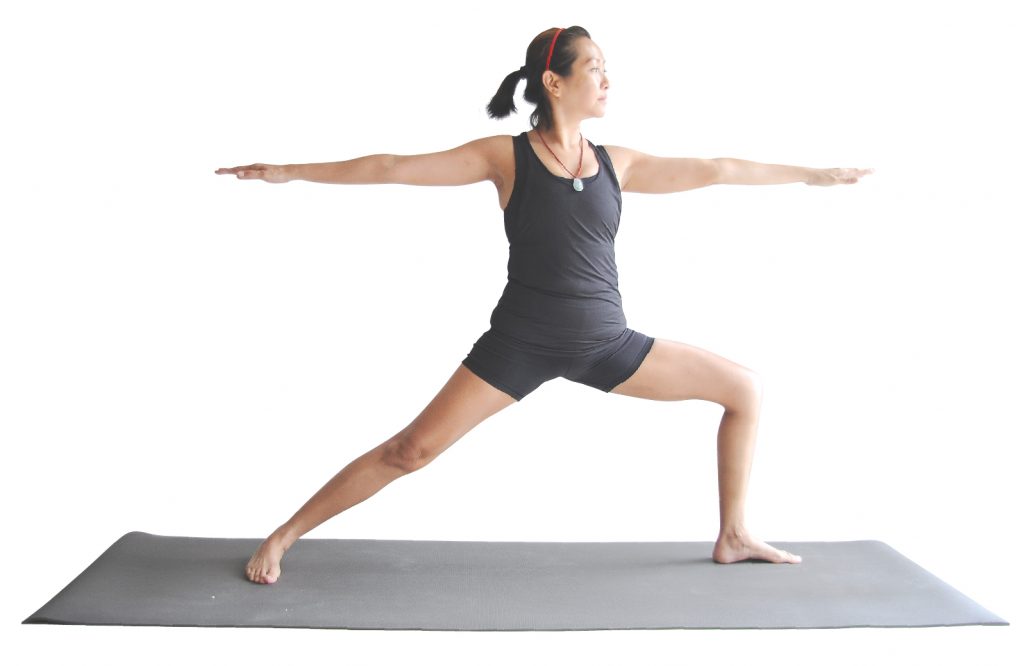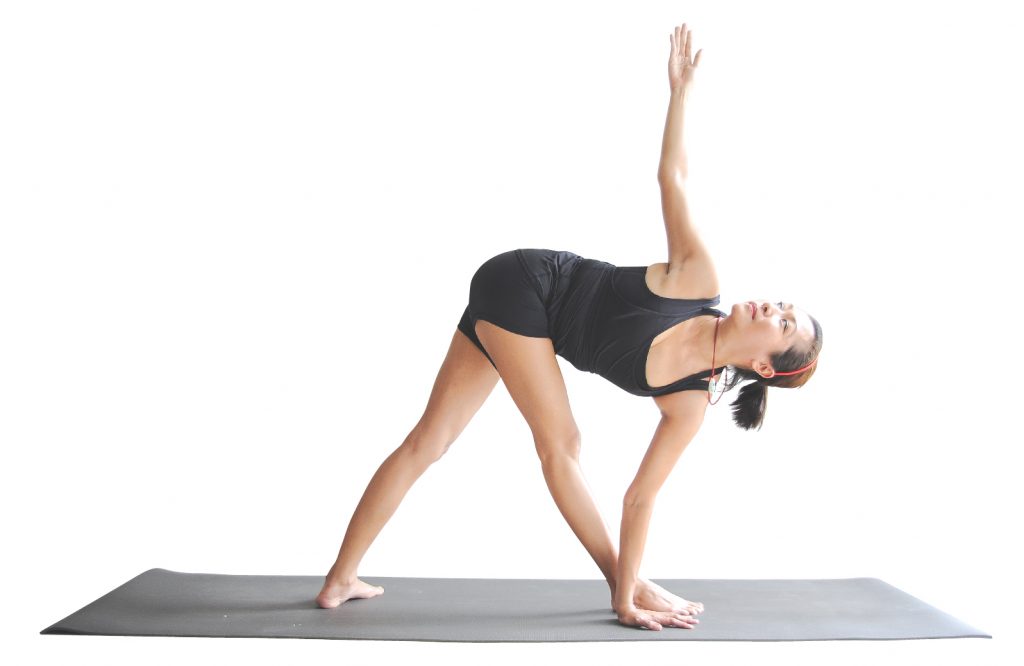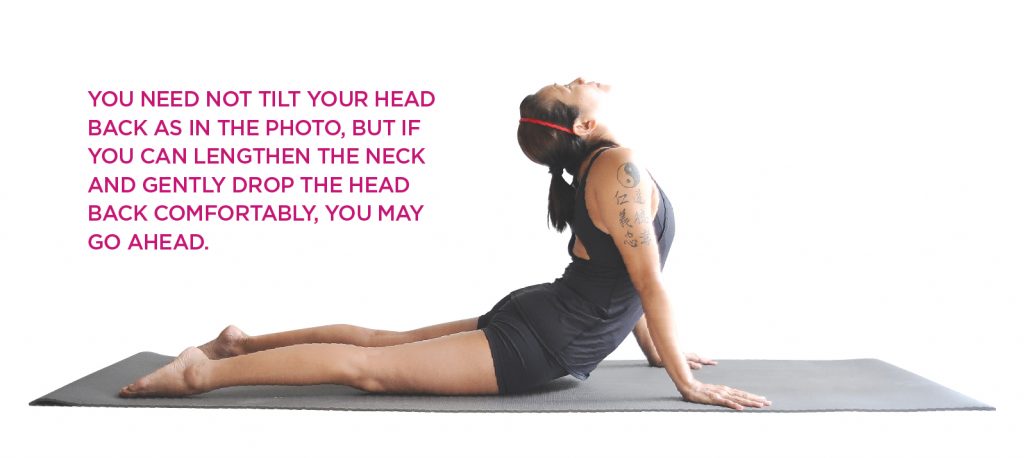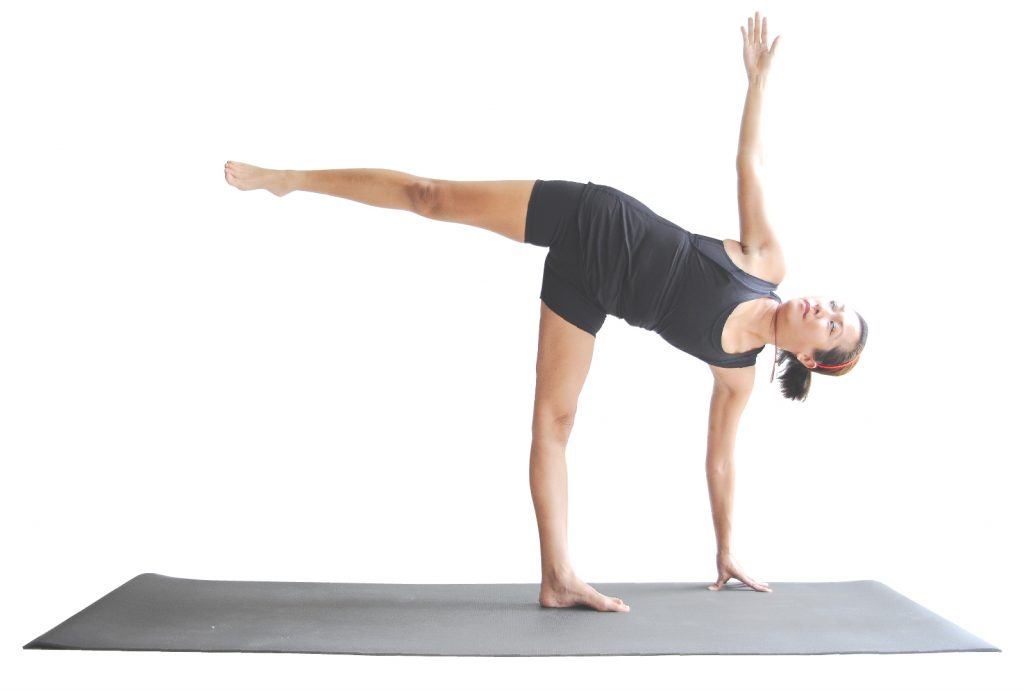
The year has ended quickly and there have been a great number of races and running challenges, with which I hope that this section has helped. In this piece, we will recap what we learnt earlier, combining elements from the year’s articles into one cohesive flow.
As you begin your cross-training with yoga, perhaps it is best to begin by centring yourself. You may begin centring yourself on your breath. After using your breath as a foundation, you might want to practise a variety or two of yogic breathing or pranayama (see Issue 7 for more details).
Following that, you may begin your mat practice by doing a few classical sun salutes (see Issue 8 for more details), keeping focused on the breath and also on the aspect that this sun salute emphasises lengthening and opening. So keep your chest area, hip flexors, hamstrings and entire body open and ready for the stronger poses later in the flow.
You may then practise a few core poses, including four-limbed staff and half-moon pos-es below (for more yoga core poses, see Issues 4 and 9). You may also add in some mild hip openers, for example, Warrior Two pose below (for more hip opening poses, see Issue 2). Following this, you may incorporate some twists to help lengthen and open up the fascia in your body, including revolved triangle below (for more fascia-friendly poses, see Issue 11).
You may also then include some backbends. For those with stiff upper backs, especially due to running and cycling, the cobra pose below is ideal. Then, if you are practising with someone, you may opt to include a few partner stretches at the end of your mat practice (see Issue 10).
Good luck & enjoy!

Virabhadrasana II (Warrior Two)
- From Tadasana (see Issue 1), exhale, step your feet about 4 feet apart. Lightly place your hands on hips, while rotating your right foot slightly to the right and your left foot out to the left 90 degrees. Align the left heel with the right heel.
- Activate your thigh muscles and rotate your left thigh outward so that the centre of the left knee is aligned Activate your thigh muscles and rotate your left thigh outward so that the centre of the left knee is aligned with the centre of the left ankle.
- On your next exhalation, bend your left knee so that the shin is perpendicular to the mat, knee over ankle. Ensure that your right leg is activated. Press the outer right heel firmly to the floor.
- Raise your arms parallel to the mat and reach them actively out to the sides, palms facing downward. Ensure the left knee does not cave inward towards the right.
- Avoid leaning the torso over the left thigh as both sides of the torso should be equally long with the shoulders directly over the pelvis. Lengthen your tailbone towards the pubis. Turn the head to the left and look to the left index finger.
- Hold for about five breaths, then switch to the right.
Parivrtta Trikonasana (Revolved Triangle)
- Start in Tadasana / Samastithi (see Issue 1). Exhaling, step your feet about 3½ to 4 feet apart. Raise your arms shoulder height, parallel to the floor, keeping them active. Rotate your left foot in 45 to 60 degrees to the right and your right foot out to parallel to the mat. Align the right heel with the left heel. Activate the front thigh, aligning the centre of the right kneecap with the centre of the right foot.
- On the next exhale, rotate your trunk to the right, squaring your hips to the front of your mat. As you bring the left hip around to the right, firmly ground the left heel.
- On the next exhalation, rotate your trunk further to the right and fold forward over the right leg. If you can, place your left hand down, either to the floor (inside or outside the foot) or onto a block. When you are ready, extend the right hand upward, keeping your eye gaze to the floor or to the right. If comfortable, look up to the right hand.
- Stay in this pose for 30 seconds Stay in this pose for 30 seconds to a minute to start with. Then repeat on the other side.

Chaturanga Dandasana (Four Limbed Staff Pose)
- From Plank Pose (see Issue 4), get your shoulder blades to hug your back ribs, while lengthening your tailbone towards your pubis.
- Exhale, bend your elbows until your forearms are perpendicular to the floor, with your upper arms and torso parallel to the floor. It is common for the low back to dip towards the floor and the tailbone to poke upwards.
- While in the pose, keep your tailbone lengthening towards the pubis, with your legs activated. Draw your pubis towards the navel.
- Widen the space between your shoulder blades. Hug your elbows to your ribs, rather than allowing them to splay out. Lift the top of the sternum and your head to look forward slightly.
- Hold this position from anywhere beginning at 10 to 30 seconds. Exhale as you release the pose. Repeat again (start with at least two rounds).Hold this position from anywhere beginning at 10 to 30 seconds. Exhale as you release the pose. Repeat again (start with at least two rounds).
Bhujangasana (Cobra Pose)
- From Plank pose (see Issue 4), lower yourself until lying prone on the mat. Actively stretch your legs backwards, toes lengthening back with the top of the feet on the mat. Place your hands under your shoulders with fingers spread. Hug in your elbows to your ribs.
- Keep pressing the tops of the feet, front of thighs and the pubis firmly onto the mat. Lengthen your tailbone towards your heels.
- Inhale and gently straighten your elbows to lift your chest off the mat. Stop at a height which is comfortable for you. Ensure your tailbone keeps lengthening backwards towards your heels.
- Ensure your shoulder blades hug your back ribs. Lengthen the top of the shoulders so that a nice length is maintained from neck to the top of the arm bones.
- Lift yourself through the top of the sternum. You need not tilt your head back as in the photo, but if you can lengthen the neck and gently drop the head back comfortably, you may go ahead.
- Hold the pose for about five deep breaths, then gently release down with an exhale.
Ardha Chandrasana (Half Moon Pose)
- Start in Tadasana / Samastithi (see Issue 1). Exhaling, step your feet about 3½ to 4 feet apart. Raise your arms shoulder height, parallel to the floor, keeping them active. Rotate your left foot in 45 to 60 degrees to the right and your right foot out to parallel to the mat. Align the right heel with the left heel. Activate the front thigh, aligning the centre of the right kneecap with the centre of the right foot.
- On the next exhale, rotate your trunk to the right, squaring your hips to the front of your mat. As you bring the left hip around to the right, firmly ground the left heel.
- On the next exhalation, rotate your trunk further to the right and fold forward over the right leg. If you can, place your left hand down, either to the floor (inside or outside the foot) or onto a block. When you are ready, extend the right hand upward, keeping your eye gaze to the floor or to the right. If comfortable, look up to the right hand.
- Stay in this pose for 30 seconds to a minute to start with. Then repeat on the other side.
 Daniel Chandranayagam is a yoga teacher, certified by Manasa School of Yoga. He is also an ACE certified personal trainer (T158691), working as a personal trainer and boot camp coach. Beginning his career in writing, Daniel decided to diversify into one of his life passions, fitness. Daniel begins a Yoga for Runners programme beginning from 2nd April 2014 at Manasa, SS2 Petaling Jaya. For more information, you can email him at dchandranayagam@gmail.com
Daniel Chandranayagam is a yoga teacher, certified by Manasa School of Yoga. He is also an ACE certified personal trainer (T158691), working as a personal trainer and boot camp coach. Beginning his career in writing, Daniel decided to diversify into one of his life passions, fitness. Daniel begins a Yoga for Runners programme beginning from 2nd April 2014 at Manasa, SS2 Petaling Jaya. For more information, you can email him at dchandranayagam@gmail.com
































































































